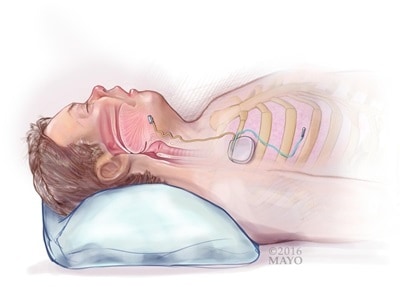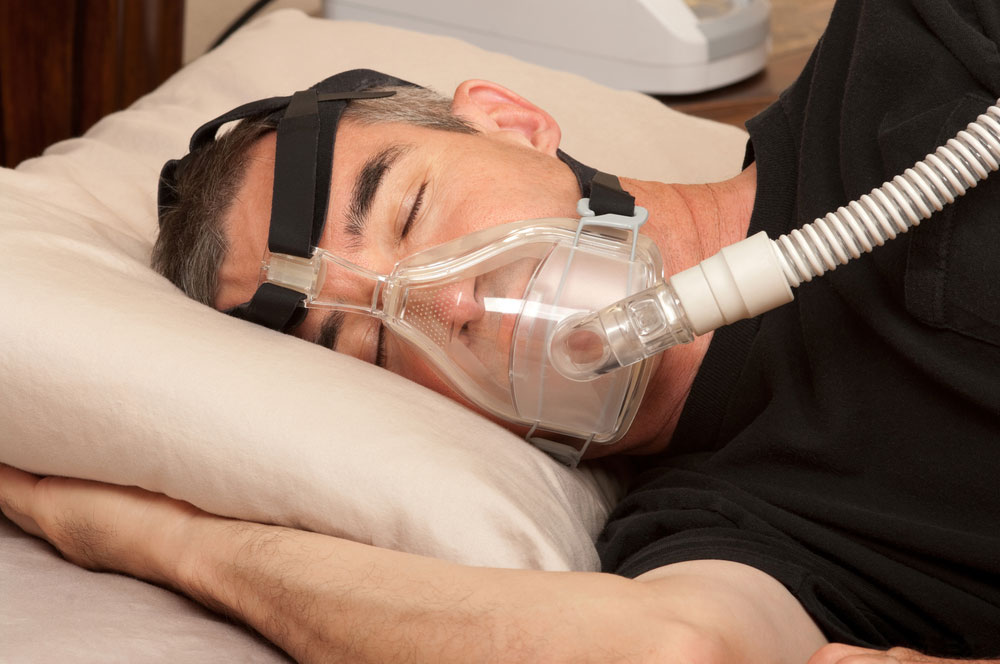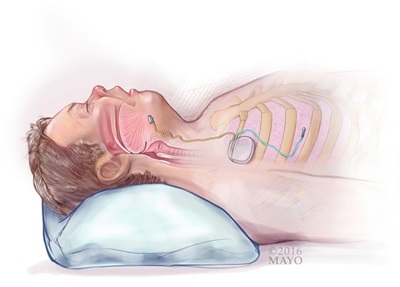
A restful night’s sleep is more than just rejuvenating, it improves your health, memory and mood. Yet for millions of U.S. adults, restful sleep is elusive because they have obstructive sleep apnea.
Sleep apnea is a potentially serious sleep disorder in which breathing repeatedly stops partially or completely. These events can result in low oxygen levels and cause frequent episodes of waking. Obstructive sleep apnea is the most common form of sleep apnea, and occurs when the throat muscles relax and block the airway during sleep. About 18 million U.S. adults have moderate to severe obstructive sleep apnea.

The most common treatment for obstructive sleep apnea is called continuous positive airway pressure, or CPAP. The person with sleep apnea wears a mask while sleeping that uses a continuous stream of air pumped by a machine to keep the upper airway open.
Some people find the mask and associated machine cumbersome, uncomfortable or loud; feel that it interrupts their partners’ sleep; or say the machines are difficult to clean properly. A study of CPAP users found that 34% stopped using the machine. Common problems were difficulty tolerating the air pressure, poor mask fit, dry mouth and feelings of claustrophobia. People also have difficulty sticking to their CPAP therapy. Another study showed that 46% of patients with sleep apnea had stopped treatment by three years after diagnosis.
There is good news. Upper airway stimulation therapy using a hypoglossal nerve stimulator is an option for people who are unable to tolerate their CPAPs. It’s been approved by the Food and Drug Administration for the treatment of obstructive sleep apnea.
Placing the device
The treatment involves implanting a small device under the skin in the upper chest during a short outpatient procedure. While monitoring breathing while you sleep, the device delivers mild stimulation when the user turns it on with a remote control. This helps keep your upper airway open and reduces breathing pauses that occur with sleep apnea.

The device is placed during a same-day procedure at the hospital.
It’s inserted using two small incisions:
- Under the chin to place a small cuff on the nerve that controls the tongue
- In the upper chest to place the device and the sensing lead
How it works
Using upper airway stimulation therapy is easy. When it’s time for sleep, you press the button on the remote to activate the device. While sleeping, the device opens your airway to allow for normal breathing and a peaceful night’s rest. It’s usually set for a specific length of time based on your usual sleep pattern, then automatically turns off.
The results of upper airway stimulation therapy are good. One study showed a decrease in apnea-hypopnea index, or AHI, from 29 to nine events per hour at the 12-month follow-up. AHI is the average number of breathing pauses per hour. The typical value is less than five.
Hours of usage also are significantly higher when compared to CPAP therapy. The overall complication rates are low, with fewer than 0.5% of patients experiencing severe complications after the implant.
Candidates for upper airway stimulation therapy
Upper airway stimulation therapy is a safe, effective option for many people with obstructive sleep apnea; however, it’s not appropriate for everyone.
You must meet these criteria to be considered for this therapy:
- Age 18 or older, or 13 or older with Down syndrome and sleep apnea
- Failure or intolerance of CPAP therapy
- Body mass index between 32 and 35
- Apnea-hypopnea index between 15 and 65
- Completed sleep study within the last two years
- Less than 25% central and mixed apneas
- Appropriate airway anatomy assessed by endoscopy prior to the implant
Additional testing may be necessary to confirm your eligibility.
Treatment benefits
Getting consistent quality sleep improves your overall health and well-being in many ways. Untreated sleep apnea can cause various problems, including excessive daytime sleepiness that may lead to accidents, memory problems, and an increased risk of heart attacks and heart rhythm problems.
Benefits of upper airway stimulation therapy include:
- Staying awake during the day
- Protecting memory function
- Being more productive
- Eliminating additional equipment and tubing that requires sanitizing and maintenance
- Doing away with a mask while sleeping
- Eliminating noise and possible interruption of your partner’s sleep
Talk with your healthcare team about your symptoms, and ask if you could benefit from upper airway stimulation.
Christopher Williams, M.D., is a pulmonologist in Eau Claire, Wisconsin.
This article originally appeared on the Mayo Clinic Health System blog.
The post Treating sleep apnea made easier: Upper airway stimulation therapy appeared first on Mayo Clinic News Network.
This article originally appeared here and was republished with permission.












